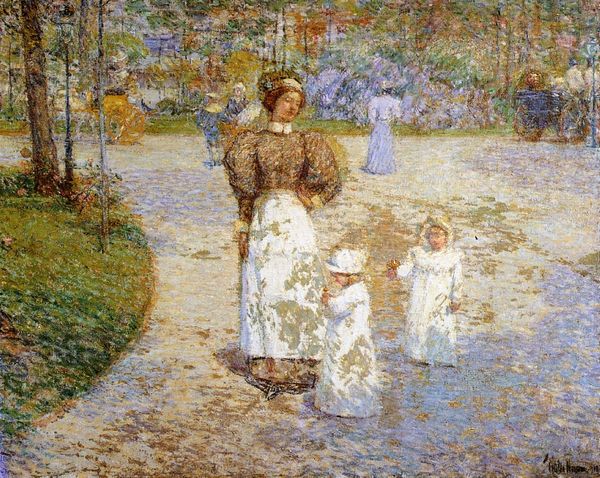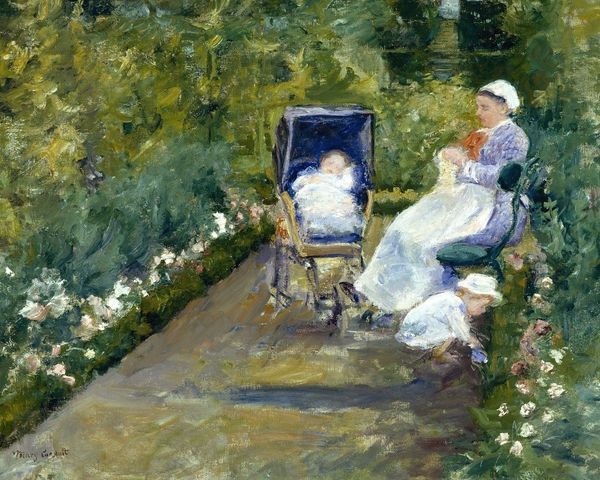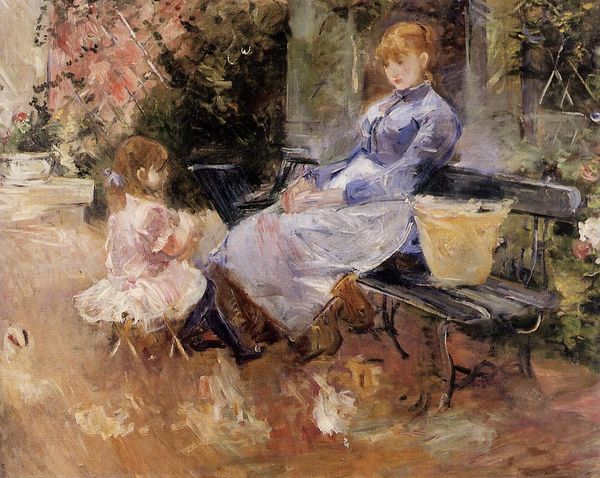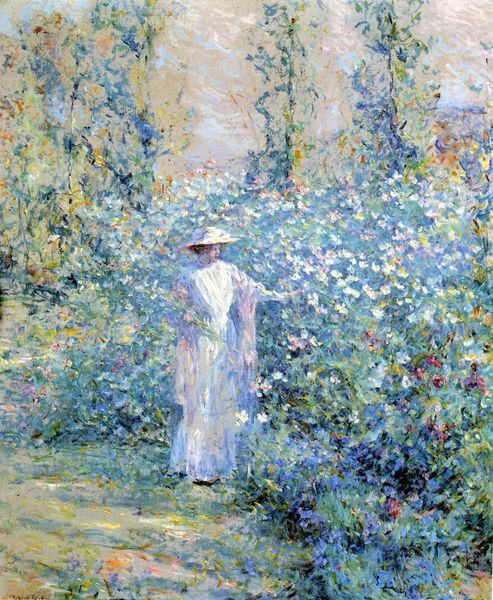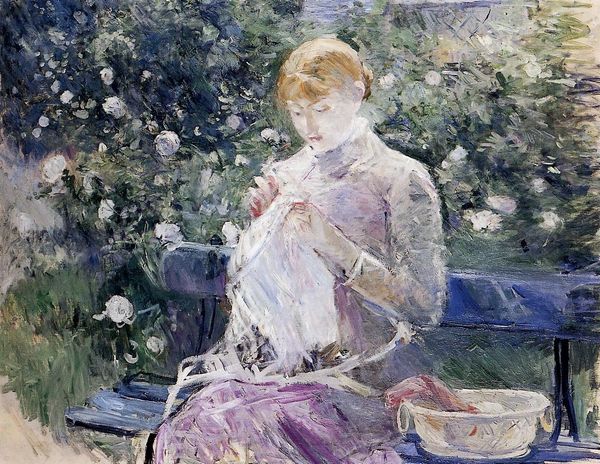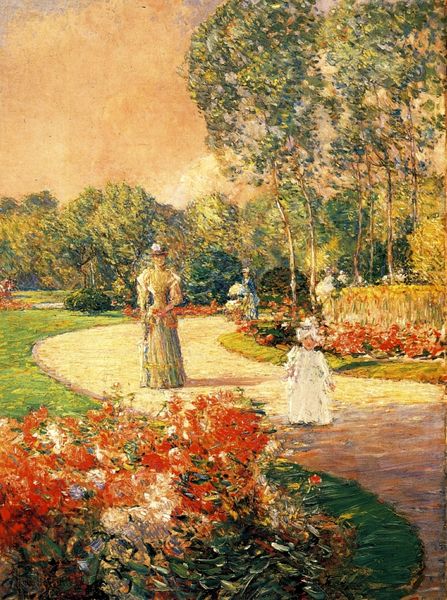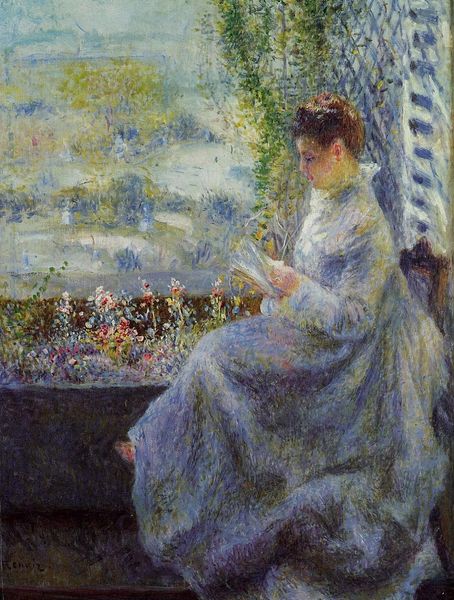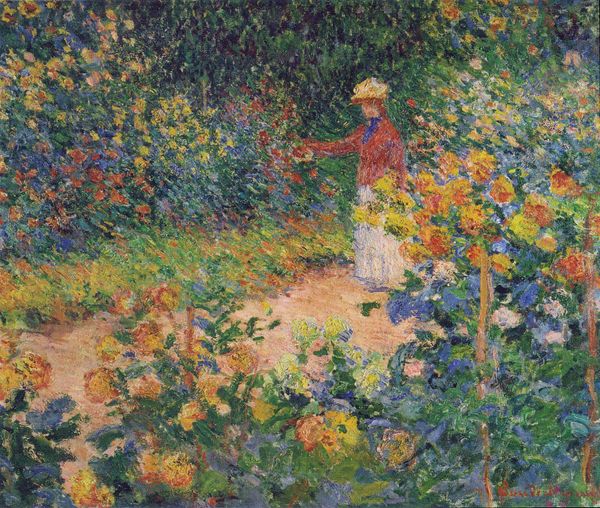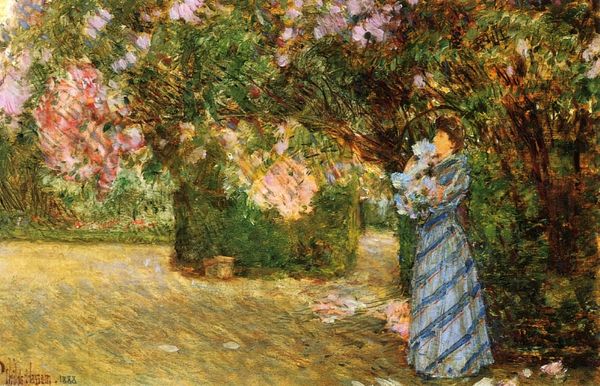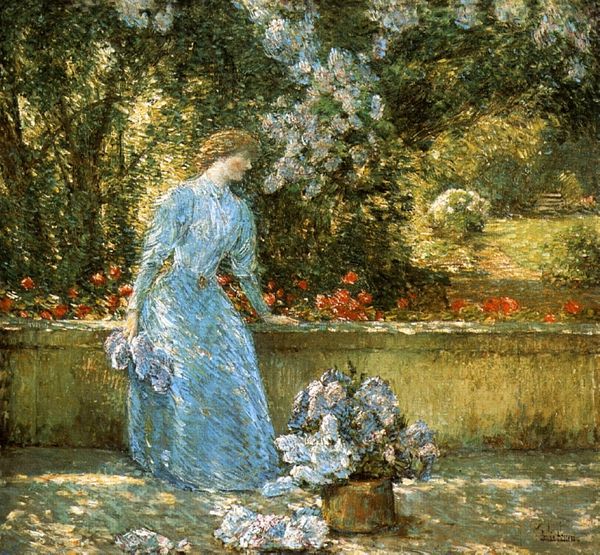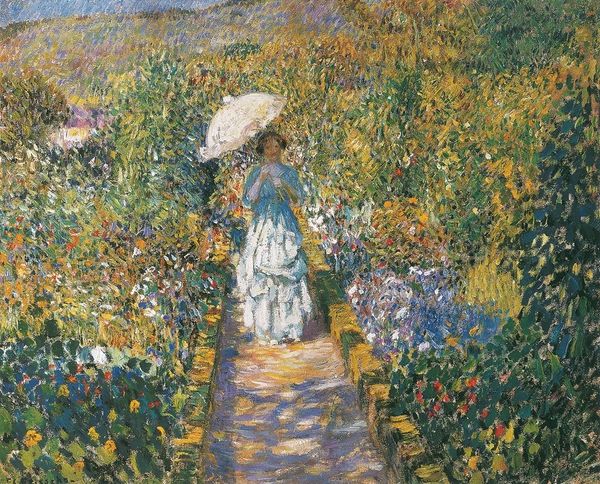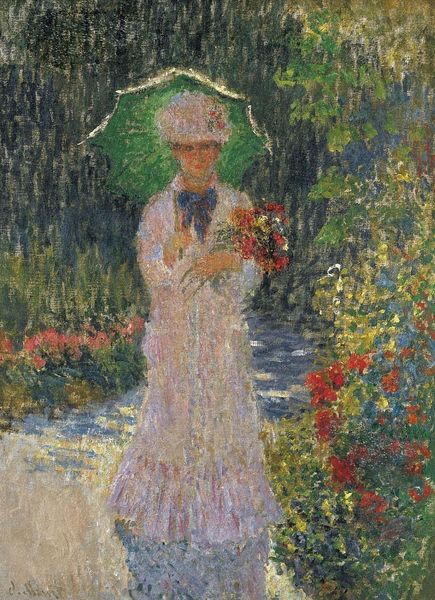
Camille Monet and a Child in the Artist’s Garden in Argenteuil 1875
0:00
0:00
claudemonet
Museum of Fine Arts (MFA), Boston, MA, US
#
eye bird view
#
mother nature
#
flower
#
nature
#
acrylic on canvas
#
plant
#
animal portrait
#
naive art
#
animal drawing portrait
#
expressionist
#
animalistic
#
digital portrait
Dimensions: 55.3 x 64.7 cm
Copyright: Public domain
Curator: Let's take a look at Claude Monet's "Camille Monet and a Child in the Artist’s Garden in Argenteuil," painted in 1875. Editor: Immediately, I see a captured moment of quiet domesticity. The colors are so soft, it's like peeking into a private world. Curator: Absolutely. Notice how the flowers serve as a kind of symbolic backdrop, their density echoing the fullness of Camille’s life, her role as mother and muse. The color harmonies also evoke ideas of serenity and peace. Editor: It's interesting you mention the role of motherhood. How might Camille's domestic responsibilities have influenced or even limited her own creative pursuits? Were the flowerbeds perhaps her creative outlet by proxy? The roses seem less a celebration, more of a symbol of labor. Curator: That's a fascinating point. Roses have complex symbology – love, beauty, but also the thorns of earthly existence, maybe domestic confinement in this context. The child, a figure of innocence, adds another layer. This image has a kind of “Madonna in the Garden” quality, referencing traditional iconography in a thoroughly modern setting. Editor: Except here the Madonna sews, forever tethered to an unending labor, the opposite of miraculous conception. It raises the question of who gets to be a "genius." Are domestic responsibilities equally shared in creative households or are they a burden disproportionately shouldered by women? Monet benefitted from Camille's devotion. How might history remember Camille had she possessed his opportunities? Curator: A compelling perspective. One cannot ignore the impact societal structure plays on the ability to create art. Considering this piece and those like it through this new lens allows viewers the opportunity to confront latent bias. Editor: I'm left thinking about how everyday life intertwines with artistic expression, how seemingly simple scenes carry complex social and historical narratives, especially for women artists and their models. It serves as a gentle but pointed reminder of progress still needed.
Comments
No comments
Be the first to comment and join the conversation on the ultimate creative platform.
